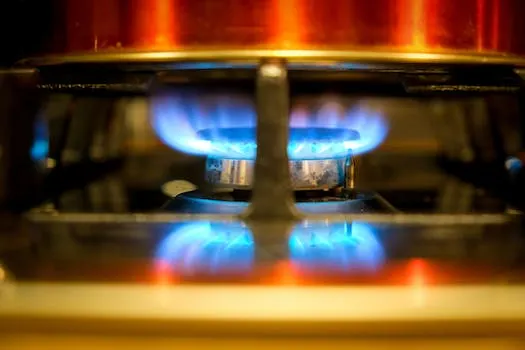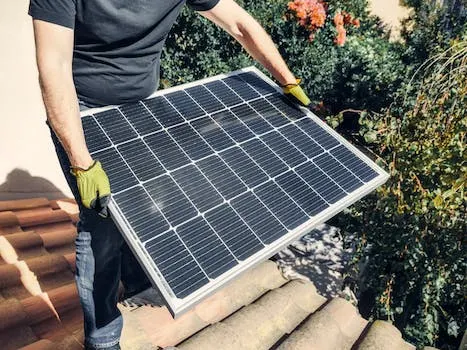
The Serious Health Impact of Gas Stove Pollution
Gas stoves are a common fixture in many kitchens around the world, providing an affordable and convenient way to cook food. However, a recent study has revealed that the emissions from gas stoves can have serious health implications for those living in the same household. In fact, one in eight cases of asthma in US children is caused by gas stove pollution according to this study. Furthermore, it was found that emissions from gas stoves can create indoor air pollution that is worse than traffic fumes. This article will explore the serious health implications of gas stove pollution and what can be done to reduce its impact.
The Stanford scientists who conducted Thursday's study measured emissions from 53 homes across seven California counties and used their findings to determine how much methane was being released into the atmosphere due to gas stove use. The results showed that these gasses were warming up our planet as well as posing serious health risks for those living with them on a daily basis. Two new studies out this year have further highlighted these potential risks by showing how fumes from gas stoves can aggravate lung ailments such as asthma or bronchitis when inhaled over long periods of time.
Gas stoves are now seen as a threat not only to human health but also our planet's climate due to their contribution of methane into the atmosphere even when they are not being used - something which was previously unknown until recently studied by scientists at Stanford University. This has led environmentalists to campaign for kicking out all forms of natural gases from buildings in order to fight climate change more effectively and protect people's health at home too.
It is clear then that there are serious consequences associated with using gas stoves which must be addressed if we want healthier households and a healthier planet overall - something which this article will explore further so readers understand just how important it is take action against this form of air pollution today!
What Is Gas Stove Pollution?
Gas stoves are a common household appliance, but they can have serious health impacts due to the pollutants they emit. These pollutants include nitrogen dioxide (NO2), carbon monoxide (CO), particulate matter (PM), formaldehyde, methane, and ozone (O3). NO2 is a harsh-smelling gas that can cause breathing problems and is a precursor for ozone and PM. CO is an odorless gas that can cause headaches, nausea, reduced lung function, and aggravate existing respiratory or cardiovascular conditions. PM is made up of tiny particles that can irritate eyes, nose and throat when inhaled. Formaldehyde is a known carcinogen linked to an increased risk of cancer. Methane has no direct health effects but contributes to climate change when released into the atmosphere. Ozone is formed from NO2 in the presence of sunlight and can also cause respiratory issues when inhaled in high concentrations.
The health impacts of these pollutants are especially concerning during the Covid-19 pandemic as people spend more time indoors where air pollution levels may be higher than outdoors due to lack of ventilation or other factors such as gas stove use. The EPA warns that exposure to these pollutants over long periods of time could lead to serious health issues such as eye irritation, headaches, nausea or reduced lung function for both adults and children alike. In addition to this long-term exposure risk there are also short-term risks associated with high concentrations of some pollutants like CO which could lead to dizziness or even death if not addressed quickly enough by proper ventilation or other means such as turning off the stove immediately if symptoms occur while cooking with it on .
It's important for people who use gas stoves regularly at home or in commercial settings take steps towards reducing their emissions by ensuring proper ventilation systems are installed in their homes/businesses so that any harmful gases produced by their stoves don't accumulate indoors where they could pose a greater risk for those living/working there . Additionally , regular maintenance should be done on all combustion appliances including checking flues , vents , filters etc . This will help ensure any emissions produced by these appliances don't reach dangerous levels inside your home/business .
The Impact of Gas Stove Pollution on Asthma
A recent study has revealed that gas stove pollution is a major contributor to the prevalence of asthma in children in the US. The research found that 12.7% of childhood asthma cases are caused by this type of air pollution, which is particularly concerning as children are more vulnerable to its effects due to their still-developing respiratory systems. Poor indoor air quality can trigger asthma symptoms, and a 2013 meta-analysis of 41 studies found that those living in homes with gas stoves had a 42 percent higher risk of experiencing asthma than those without them.
Asthma is an incredibly common chronic lung disease, affecting nearly 1 in 10 American children and 5 million people worldwide. Risk factors for developing the condition include poverty, air pollution, access to specialist medical care, pollen counts, medicine use, tobacco policies and the rate of uninsured individuals. Common triggers for asthmatic symptoms include household dust, mold and tobacco smoke - all three can be exacerbated by poor indoor air quality caused by gas stove pollution.
The recent study into this issue found that one in eight cases of childhood asthma were directly linked to cooking on gas stoves - a figure which rises significantly when compared with those who do not have them at home (42%). This highlights just how dangerous these appliances can be when it comes to respiratory health; especially considering how vulnerable young people are due to their still-developing lungs and immune systems.
It's clear from this research that more needs to be done when it comes to reducing exposure levels from gas stove pollutants; both inside homes and out on the streets where they contribute significantly towards overall air quality levels too. With so many people affected by this condition already - not just children but adults too - it's essential we take steps now before any further damage is done or any more lives put at risk from its serious health impacts.
The Impact of Gas Stove Pollution on Indoor Air Quality
Gas stoves are a major source of indoor air pollution, with emissions of nitrogen dioxide (NO2), carbon monoxide and formaldehyde. These pollutants can travel deep into the lungs, causing serious long-term health problems. Studies have revealed that the emissions from gas stoves can create indoor air pollution that is worse than traffic fumes due to the presence of 'secondary PM', which is made up of tiny particles of metals and other pollutants. This type of air pollution has been linked to an increased risk for asthma and other illnesses, both inside and outside your home.
The World Health Organization (WHO) has established guidelines for indoor air quality in order to protect public health from these harmful pollutants. These guidelines recommend avoiding activities such as hobbies or cleaning that may off-gas benzene, as well as using building materials with low levels of volatile organic compounds (VOCs). Additionally, regular maintenance on gas stoves should be done in order to reduce the amount of NO2 released into the environment.
Overall, it is clear that gas stove pollution has a significant impact on indoor air quality and public health. The presence of secondary PM particles can cause serious long-term health issues if not properly addressed through WHO guidelines or regular maintenance on gas stoves. It is important for people to be aware of this issue so they can take steps towards reducing their exposure to these harmful pollutants in order to protect their own health and that of their family members or pets living in their home environment.
How to Reduce the Impact of Gas Stove Pollution
Cooking with a gas stove can be a source of air pollution in the home, releasing potentially dangerous pollutants such as carbon monoxide, formaldehyde and nitrogen dioxide. An accumulating body of research suggests that these pollutants can have serious health impacts, including respiratory effects. To reduce the impact of gas stove pollution on indoor air quality, the Environmental Protection Agency (EPA) recommends installing an exhaust fan above your gas stove that is vented to the outdoors. The American Gas Association (AGA) also suggests using gas stoves with lower emissions and making sure they are regularly serviced and maintained. Additionally, replacing your gas stove with an electric or induction cooktop may help reduce NO2 emissions in your home. Finally, adding plants to your kitchen can help clean the air naturally. While there are some health risks associated with using a gas stove, unless you already have asthma or other respiratory conditions it is unlikely that these risks are unique to cooking with natural gas or propane stoves.
Conclusion
The serious health impact of gas stove pollution is becoming increasingly clear. A recent study from Stanford University found that one in eight cases of asthma in US children is caused by gas stove pollution, and that the emissions from gas stoves can create indoor air pollution worse than traffic fumes. Poor ventilation and stove maintenance are major drivers of these effects, as well as the fact that gas stoves emit methane even when they are not in use. This makes them a bigger contributor to the climate crisis than previously thought. Fortunately, there are some simple steps we can take to reduce the impact of gas stove pollution on indoor air quality. Knowing the potential health implications of gas stove pollution can help us all make informed decisions about how we cook our food and protect ourselves from its harmful effects.









